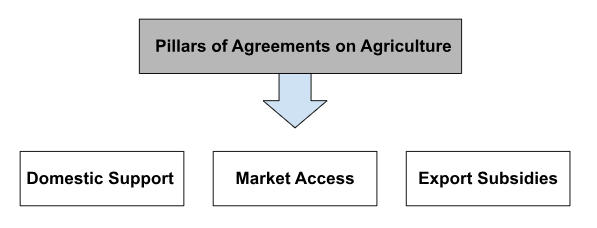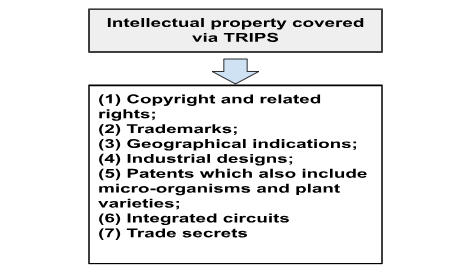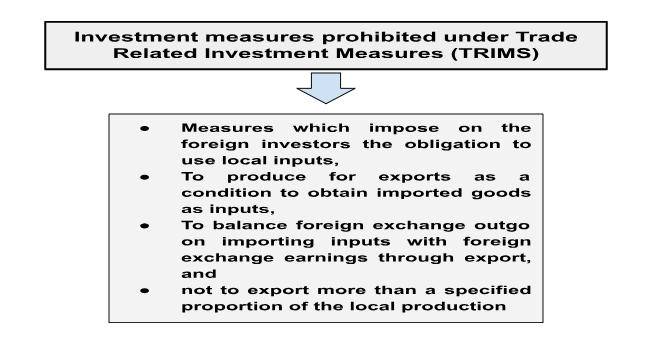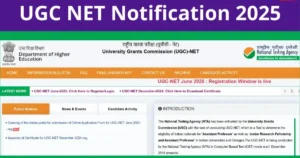Table of Contents
World Trade Organisation is an organisation working at the global level to regularise trade among member nations. These trade dealings are regulated with the help of different agreements signed. In this article, we will learn about the World Trade Organisation, and its agreements with a major focus on agreements like the Agreement on Agriculture (AOA), General Agreement on Trade and Tariffs (GATT), General Agreement on Trade in Services (GATS), Trade Related Intellectual Property Rights (TRIPS) and Trade Related Investment Measures (TRIMS).
Trade Agreements Overview
Today the world has become a global village leading to the dependence of one country on the other. No country is self-sufficient. There are different trade theories supporting international trade to get absolute and relative advantages for the economy. However, there is a need to make rules and regulations for managing and organising trade in a disciplined manner at the global level. Here comes the role of the World Trade Organisation (WTO). It is an organisation at the international level with the aim of promoting international trade.
What is WTO?
The WTO is the only international organization that deals with the global rules of trade between nations. It ensures that trade flows smoothly, predictably and as freely as possible. came into being on 1 January 1948 as a result of an agreement among 23 proponent countries to have a multilateral trade regulating organization in place of an International Trading Organization (ITO).
What are Trade Agreements?
Trade Agreements are the agreements entered into by the member nations to facilitate trade of goods and services. The WTO oversees about 60 different agreements which have the status of international legal texts. Member countries must sign and ratify all WTO agreements on accession. Some of the most important agreements and the sum and substance of these are discussed below:
Agreement on Agricultural (AOA)
The Agreement on Agriculture ( AoA) provides a framework for bringing in a long-term reform of agricultural trade and domestic policies relating to it so as to introduce over the years increased market orientation of agrarian produce.
The Agreement became operational after the establishment of the WTO at the beginning of 1995. The AoA has three pivotal concepts, or “pillars” namely,

- Domestic Support: This refers to the criteria where the World Trade Organisation made regulations for the countries providing excessive support to domestic farmers in the form of subsidies and other measures that lead to distortion of trade.
- Market Access: This pillar is concerned with improving market access by reducing tariff barriers and tariffication. Tariffication is a process where non-tariff barriers are converted into tariff barriers. This results in an improvement in market access.
- Export subsidies: Export subsidies are important for the enhancement of the trade but these should be kept within limits, so that they will not distort trade
The Agreement provides for the opening of national markets to international competition
General Agreement on Tariffs and Trade (GATT, 1994)
This agreement is often misunderstood as the same GATT which was formulated on 1947 before the WTO came into being. but the GATT, 1994 is an international treaty binding upon all WTO Members. The GATT 1994 is only concerned with trade in goods. The GATT 1994 aims at further liberalizing trade in goods through the reduction of tariffs and other trade barriers and eliminating discrimination.
The General Agreement on Trade in Services (GATS)
The General Agreement on Trade in Services (GATS) was instituted to extend the multilateral trading system to the services sector, just as the GATT provided a system for trade in merchandise. The Agreement came into force at the same time WTO became operational.
GATS include four modes of international delivery of services:
(i) Cross-border supply: The cross-border supply of services such as data flows and transportation services across nations as in the case of international telephone calls.
(ii) Commercial presence: it involves providing provision of services abroad through FDI or representative offices; this will include setting up subsidiaries or opening up branches in a foreign country as in cases of operating foreign bank branches.
(iii) Consumption abroad: here, consumption of services is made in foreign country such as tourism.
(iv) Movement of personnel: it involves the entry and temporary stay of foreign consultants or fashion models, are generally referred to as the “presence of natural persons”.
Trade Related Intellectual Property Rights (TRIPS)
The agreement of Trade Related Intellectual Property Rights is advanced by Western nations forcing the adoption of stringent conditions for the protection of IPRs at the UR that was negotiated at the end of the Uruguay Round of the GATT in 1994. The Agreement on Trade-related Aspects of Intellectual Property Rights sets down minimum standards; for many forms of intellectual property (IP) regulation. standards; for many forms of intellectual property (IP) regulation. The TRIPs Agreement covers seven categories of intellectual property:
The TRIPs Agreement provides for granting product patents as opposed to processes granted under the Paris Convention. The product patents would be for 20 years, whereas for copyrights and related categories of rights, the protection would be available for 50 years. Provisions of the TRIPs Agreement were operationalized by developing countries with effect from January 2005.

Trade Related Investment Measures (TRIMS)
The Agreement on Trade-related Investment Measures (TRIMs) refers to certain conditions or restrictions imposed by a government in respect of foreign investment in the country, especially by developing countries, and calls upon member countries to introduce national treatment of foreign investments and removal of quantitative restrictions. Major highlights about the TRIPS are given below
- The Agreement on TRIMs provides that no contracting party shall apply any TRIM which is inconsistent with the WTO Articles.
- TRIMs Agreement identifies five investment measures that are inconsistent with the
GATT provisions in respect of national treatment and removal of quantitative restrictions.

Hence, the Trade Agreement on TRIMs prevents the imposition of any performance clauses on foreign investors regarding earnings of foreign exchange, foreign equity participation and transfer of technology. It requires foreign investment companies to be treated at par with national companies.
Conclusion
Trade Agreements entered by member nations of the World Trade Organisation help regulate trade at the global level. They provide an equitable opportunity for the countries to trade in a disciplined manner. Due to the agreements of WTO, no trade-distorting practices can be performed that will make one country lose and another win.
A Trade Agreement on agriculture that was earlier not the part of the organisation was entered at the request of developing nations making agriculture and important produce to be traded within the nations. Similarly, there are about 60 agreements related to trade for facilitating it.



 UGC NET Notification 2025 Out, Exam Date...
UGC NET Notification 2025 Out, Exam Date...
 CSIR NET Cut Off 2025, Download Subject ...
CSIR NET Cut Off 2025, Download Subject ...
 CSIR NET Scorecard 2025 Out, Download Re...
CSIR NET Scorecard 2025 Out, Download Re...














